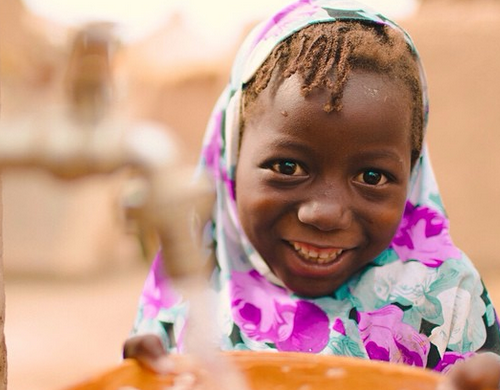We got fired up hearing amazing stories of some inspiring peer-to-peer events at the Nonprofit Technology Conference this year and wanted to share our inspiration with you. Each of these organizations took a creative approach to peer-based fundraising and created movements that were bigger than they imagined possible.
shower strike by well aware
CONCEPT
In a week-long virtual event, fundraisers vouch to not shower until they reach their fundraising goal, funds go to bring clean water to East Africa. This quirky idea features a built-in motivation to raise funds – as participants continue to show up to work and home not having showered, perhaps days on end, their co-workers and friends become increasingly motivated to get them to their fundraising goal.
GETTING started & DRIVING PARTICIPATION
-
- They knew they needed a unique idea, something a bit weird to break through the fundraising noise. What started as a joke, became a viral campaign that works.
-
- When they started, they had zero resources and no fundraising experience. Each of the organizing members recruited their friends to participate, and started with 12 people that first year, and raised $25,000.
-
- They started by custom-coding buttons on PayPal – it wasn’t ideal, but it worked. Once their concept was proven and generated funds, they were able to invest in better software.
-
- They cultivated ongoing relationships throughout the year so when the ask came to participate, the audience was primed and already engaged in the event.
GETTING SPONSORSHIP
They weren’t able to get traditional sponsorships, so offered companies an opportunity to offer a matching donation per team. This was wildly successful because it gave the business a way to be both locally involved while having a global impact.
HARD-EARNED LESSONS
There can be a difference between marketing and tactics that the organization will use to promote their campaign with how an individual or team will promote it. This is usually a good thing because it indicates high engagement with your campaign.
Any time you launch a peer-to-peer fundraiser, you’re giving up some control with branding and messaging to your advocates. And their strategy might be working, which is fantastic! But before you incorporate their successful tactics into the global campaign, consider how it might reflect on your organization’s reputation and especially that of the beneficiaries.
HILL COUNTRY RIDE FOR AIDS
CONCEPT
A single-day festive bike ride through a course in the countryside, riders must raise a minimum to participate. The funds are raised for AIDS awareness, resources, and services. Seemingly a typical cycling fundraiser, with themed pit-stops, costumes and the unique year-round community they’ve created, HCRA is anything but.
GETTING started & DRIVING PARTICIPATION
-
- From the beginning, they made marketing materials that made the ride look bigger than it was, which was effective in driving participation and getting the event off the ground.
-
- They started by using a company to produce the ride, but it ended up eating 80-90% of the funds raised. The next year, they produced it themselves with volunteers. Despite fewer rider signups and fearing that it was a failure, this switch was integral to catalyzing the camaraderie and solidifying the community. Each rider raised more because they were more engaged, and now the volunteers are one of the most important parts of the event.
-
- Over the years they’ve worked to make it an inclusive event, not just for die-hard cyclists or those personally affected by HIV/AIDS. They offer several training sessions throughout the year to make the ride accessible to various ability levels, and also allows each rider to raise more since they can ride farther.
-
- Stretching the main event into a multi-event series throughout an entire year has made this so engaging, it’s now a staple of local culture that everyone wants to be a part of. We love the idea of “Distribution Day” as a party later in the year, where the funds raised are publicly given to the beneficiaries and all of the participants come to celebrate.
GETTING SPONSORSHIP
A short, urgent matching donation drive from sponsors has been very effective. The sponsors get a lot of exposure from it because the deadline means everyone is blasting it out at the same time. Even once the match deadline is over (and it maxes out within 20 minutes), people will continue to donate, especially because the teams are in competition with each other. The Ride was able to 9X their donations with this kind of match!
HARD-EARNED LESSONS
“A lot of people said we won’t do this until we can bring our kids. Opening it to kids opened it to thousands of new people.” It was hard finding an insurance company that would cover the event if kids were involved, but it was worth it. Spending extra on insurance ended up creating a huge return on investment.
ruthless good scavenger hunt by united way
CONCEPT
This single-day scavenger hunt features iconic spots in Austin, peppered with quizzes along the way about what experiences are like for people in poverty living in the city. The funds raised go to support under-resourced communities in Austin. Austin residents feel great pride for their city, but the reality of life for marginalized communities often goes unnoticed, so this event was created to raise awareness and get locals involved in improving the city for everyone.
GETTING started & DRIVING PARTICIPATION
-
- The second year, the day of the event it was freezing and they had very few participants, inspiring them to get creative in how they leverage their corporate sponsors.
-
- They asked existing sponsors to send employees to participate. This not only created a built-in, guaranteed audience, but with corporate-sponsored teams bringing in participants, United Way of Greater Austin was able to reignite the peer-to-peer element again in future years, ultimately saving the event.
-
- In a world of galas and 5Ks, having a unique concept that is fun enough to bring in individuals, as well as corporate teams was key to Ruthless Good’s success.
GETTING SPONSORSHIP
Focus on partnering with businesses with team-building events to jumpstart participation. Remember that most companies are always looking for ways for their employees to bond as well as engage in social responsibility, so when approaching businesses, make sure to position the ask instead as an incredible opportunity to the business. By giving their employees a way to team-build, you’re actually doing businesses a favor.
HARD-EARNED LESSONS
When donors give via their company, your nonprofit can’t get their information, can’t thank them, and can’t tell the donors what difference they made. This is a big missed opportunity, so be sure you’re getting the information from your supporters!
WHAT THEY ALL HAVE IN COMMON
While each of these fundraisers differs in activity concept and benefits different causes, surprisingly, they all have 5 key ingredients in common.
BRANDING
Did you notice how each of these events has it’s distinct branding that is separate from the benefitting nonprofit’s brand? This is a key strategic move that allows your event or fundraiser to reach an audience wider than your own nonprofits. When fundraisers share and engage with their friends and family, they are selling them on the event or campaign itself, not directly on your organization as a whole. The primary relationship that must be forged is between the fundraiser and their donors, which is linked to the campaign. Only after they become engaged in this way will they be able to develop meaningful relationships with your nonprofit’s brand directly. Branding that is specific to the campaign helps it remain relevant to a wider audience. It always helps to also create a unique hashtag to facilitate social sharing. Most social media platforms will reward trending hashtags, so if a lot of people are posting about your event, it will be picked up more easily if it has its own hashtag.
FUN FACTOR
Did you notice the stark contrast between the seriousness of the benefitting causes and the playfulness of the events? This might seem counter-intuitive, but if balanced correctly, it’s a secret to success. The virtual Shower Strike is a silly concept in and of itself, letting fundraisers get creative with the tactics they use to solicit donations that week. The Hill Country Ride for AIDS’s volunteers come in costumes and set up elaborate themes every year. Ruthless Good also encourages costumes and hosts a party afterward. The plain honest truth is that if your concept isn’t fun, no one will want to do it, even though everyone wants to feel good about making a difference. And that’s exactly what the fun factor does – it helps make it easy for people to feel really good about doing something good. But you not only have to show them a good time, but make sure you’re educating your supporters and reporting back what you did with the funds, and the impact that was able to be made. Everyone needs to remember why they are doing it, but you have to get their attention first. Even a small thing like putting fresh flowers in a vase in every porta-potty makes a difference.
“Every year we do a post-ride survey and ask, ‘why did you do this ride?’ Over the years we saw the answer switch from ‘for my family member’ to ‘because it’s fun.’ And that’s correlated to fundraising impact. If it’s not fun, people just won’t come.”
-Prentiss Douthit of HCRA
CREATIVE SPONSORSHIP
We were impressed with the innovative approaches each used to leverage business sponsorships. They were able to create a win-win-win situation for everyone and multiply the impact of the event by offering companies meaningful ways to be involved.
PERSISTENCE, and keeping it GOING year-round
It takes time to get momentum off the ground. Each of these fundraisers encountered several stumbling blocks in the early days, but got creative and stayed persistent as they experimented with new approaches. Prepare to give your event 3 years to really get going and grow legs of its own – give it a chance to have a compounding, snowballing effect for years to come.
Know that annual success depends heavily on returning participants every year. Once you have people initially engaged, nurture and cultivate excitement around the annual event year-round with other milestones and related activities. Make it a movement, not just a one-day event.
Do you have any tips to share about what worked to make your peer-to-peer event a success? We’d love to hear them!
These stories were shared at the Nonprofit Technology 2019 Conference session called “Innovative Fundraising Lessons from the Peer-to-Peer Trenches,” and we’d like to humbly thank the presenters: Sarah Evans of Well Aware, Prentiss Douhit of HRCA, David Smith of Ruthless Good, and Amy Van Wyngarden of OneCause. Keep up your amazing work!




